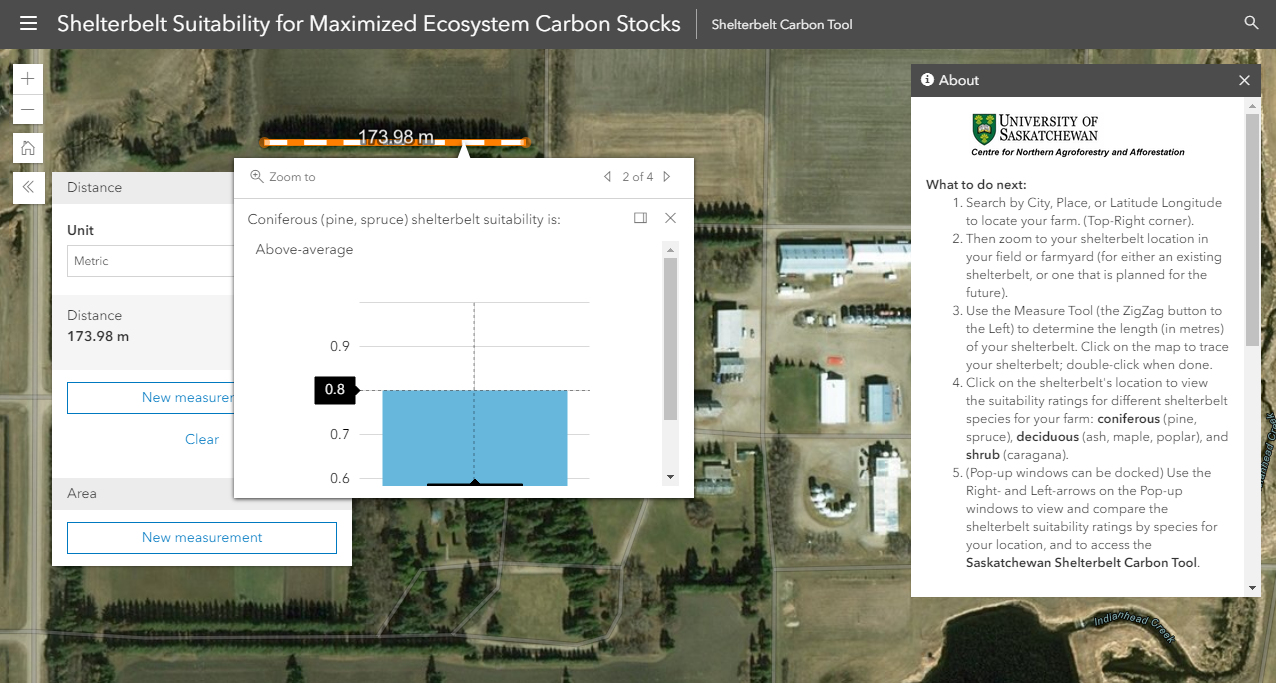- Provided below is an example of the Belt-CaT tool, which you can use to practice estimating shelterbelt carbon stocks, without going through the steps of mapping the exact shelterbelt location.
- To produce reliable and accurate carbon estimations for your shelterbelt, please use the web application for the Belt-CaT tool by clicking on the above image, or by clicking here.
The Saskatchewan Shelterbelt Carbon Tool (SK Belt-CaT) is designed to estimate carbon stocks for existing shelterbelts, as well as to project carbon stocks for future shelterbelts. The carbon stocks are estimated for four carbon pools - TEC (total), AbG (above-ground biomass), BwG (below-ground biomass), and DOM (dead organic matter: e.g., soil carbon), as shown in the Table and Chart outputs of the Belt-CaT tool.
The Belt-CaT tool also allows you to estimate the total CO2-equivalent within the shelterbelt and the monetary value (based on current or projected market price; the default is $15 CAD$ per tonne of CO2-eq. ) of the total carbon stocks for the shelterbelt, at any four points in time (you can enter any past or future shelterbelt age, 1-60 years).
The tool is designed to provide accurate estimates for six common shelterbelt species:
- caragana (CG)
- green ash (GA)
- hybrid poplar (HP)
- Manitoba maple (MM)
- Scots pine (SP)
- white spruce(WS)
- And it can also be used for any other deciduous (average for GA and MM) or coniferous (average for SP and WS) species
There are several important pieces of information that are required in order to use the Belt-CaT tool, including: shelterbelt age (if known), average tree circumference (measured at breast height, approximately at 1.4 m above ground level), spacing (distance between trees within a row), tree mortality, number of tree rows, and shelterbelt length, which can easily and quickly be measured in the field. More detailed instructions are available here.


